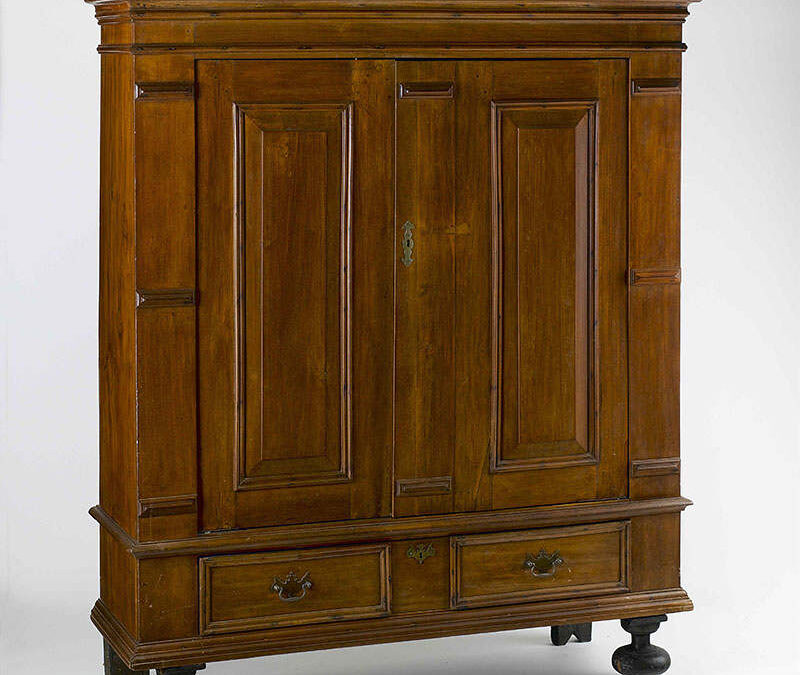Kas

| Maker | Unknown |
| Date of Creation | 1730–80 |
| Location | Westbury or Jericho, New York |
| Materials | Cherry, pine |
| Institution | Preservation Long Island |
| Credit Line | Preservation Long Island purchase |
| Accession Number | 1975.7 |
| Photo Credit | Preservation Long Island |
The kas, a large free-standing wardrobe used for the safekeeping of textiles and other valuable household goods, was the most important and impressive piece of furniture in Dutch households. Often bequeathed from one family member to another, or included as part of a woman’s dowry, kasten served as reminders of heritage, class, and identity. By the 1640s, the Dutch North American colony of New Netherland, centered in New Amsterdam in lower Manhattan, expanded across the East River onto western Long Island into present-day Kings and Queens Counties. Migrating Dutch settlers brought their cultural and craft traditions with them. The convergence of Dutch and English settler populations on Long Island also led to intermarriage between the groups. This kas was found in a house in Westbury, an area that was home to a significant Quaker community dating back to 17th century. The use of cherry as a primary wood and the relative restraint of its design and proportions, compared to examples associated with more ethnically Dutch settlements, are consistent with similar kasten with histories of ownership in Queens County Quaker families. The continued presence of the form, which remained virtually unchanged for a century, demonstrates the enduring influence of Dutch culture, a local preference for tradition, and the unique hybridization of material life on western Long Island during the 18th century.

